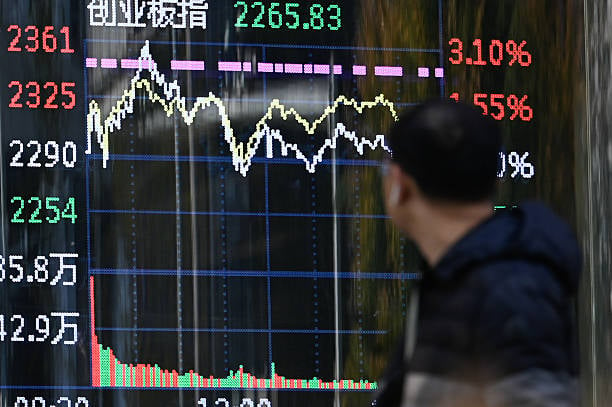New economic data shows key Chinese industries continuing to struggle in the wake of President Donald Trump’s reciprocal tariffs.
Retail sales, which track the sale of new and used goods to the general public, slowed to 5.1% in April, missing official projections for a 5.5% expansion, according to numbers from China’s National Statistics Bureau reviewed by Reuters. China’s industrial output fell to 6.1%, down from 7.7% the month before, as tariffs keep biting Chinese factories.
Following Trump’s tariffs taking effect, 16 million Chinese jobs were put at risk of vanishing, leading to layoffs and worker protests. Even though recent talks led to Tariffs being lowered from 145% to 30% over the next 90 days to allow for further trade talks, experts say China’s economy is not likely to rebound quickly.
“When you increase the tariffs to such a high level, many companies decide to stop hiring and to start basically sending the workers back home,” Alicia Garcia-Herrero, chief Asia Pacific economist at investment bank Natixis, told Reuters.
She estimated that if the tariffs were raised back to April’s level, China’s economy could slow by as much as 2.5%. Even in a best case scenario, China’s economic growth is likely to stall.
“At 30%, I doubt they will say, okay, come back. Because it’s still high,” she added. “Maybe the Chinese government is saying, wow, this was amazing. But I think many companies are not sure that this is going to work.”
A man looks at a screen showing Chinese stock market movements in Beijing on November 7, 2024. (Photo by WANG ZHAO/AFP via Getty Images)
A policy advisor who spoke to Reuters on the condition of anonymity echoed that sentiment, calling the deal a “win for China.” They did suggest, however, there would be issues with the country’s economic outlook.
”It’s difficult to do business at 30%,” the adviser added. “Over time, it will be a burden on China’s economic development.”
President Trump initially imposed a 10% tariff on Chinese goods, which reached 30% in early April, per a graph created by CNN. China responded with tariffs on American products like oil and natural gas after the U.S. raised tariffs to 104%. After China imposed a higher 125% tariff on all American goods, President Trump raised tariffs on China to 145%. Shortly thereafter, China’s economy began to slow.
China’s export industry saw new orders drop to their lowest level since 2022, while cargo shipments to the U.S. collapsed by 60%. The services sector hit a seven-month low, and China’s six largest banks reported that profits in the first quarter of 2025 were down almost $2 billion from the same time last year. (RELATED: American Manufacturers Overwhelmed With Orders After Trump’s Tariff Crackdown On China)
Chinese authorities have stopped publishing a wide range of key indicators in the last several years, including data on land sales, unemployment and foreign investment, meaning the true numbers are probably much worse, according to a Wall Street Journal analysis. Hundreds of previously available metrics have quietly disappeared, usually without explanation, the Journal reports.
A well-known Chinese economist said publicly last year that China’s economic growth was much lower than what the Chinese Communist Party claimed. Chinese President Xi Jinping ordered that he be disciplined, and he has not spoken publicly since, the Journal reported.


